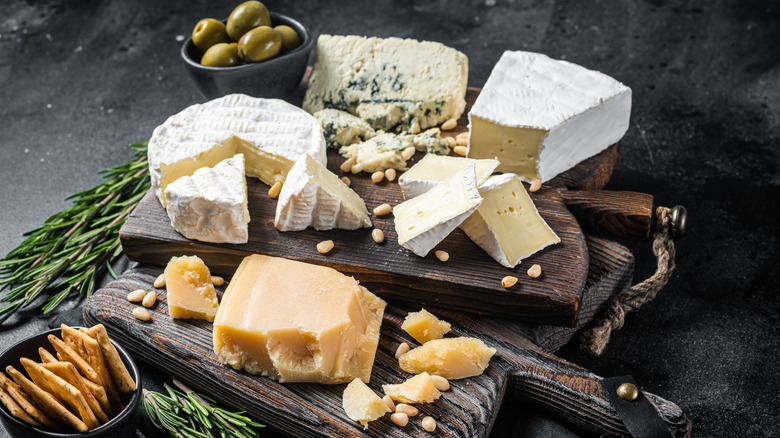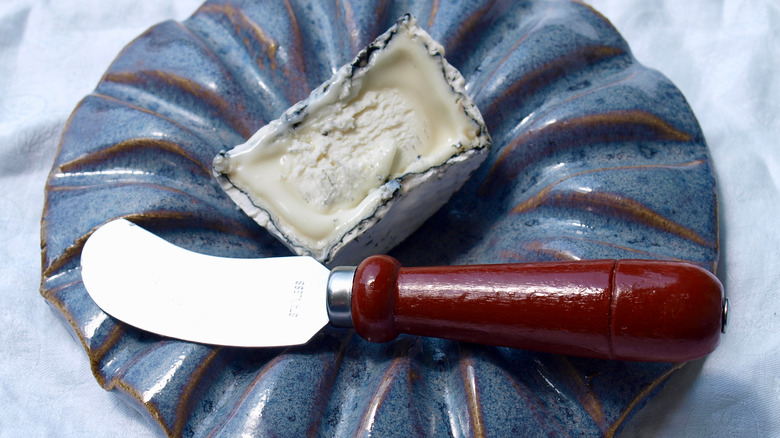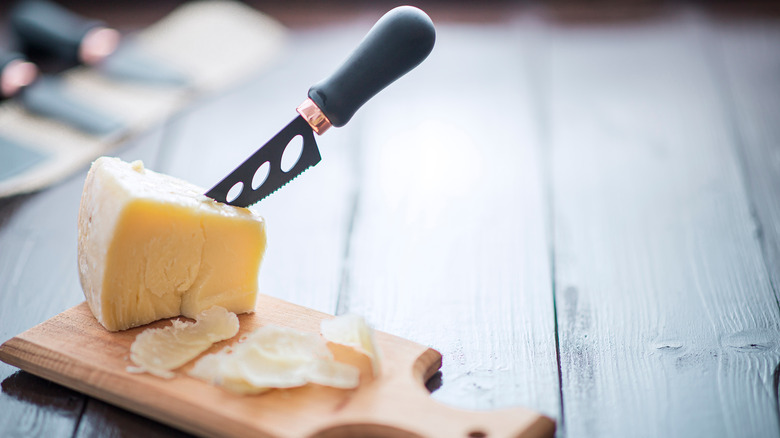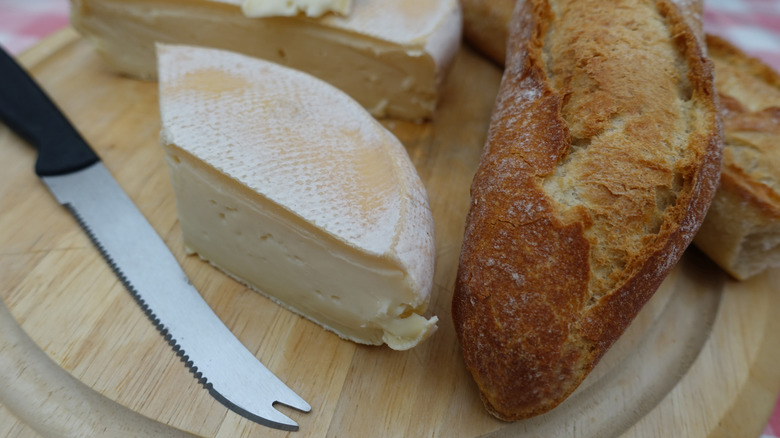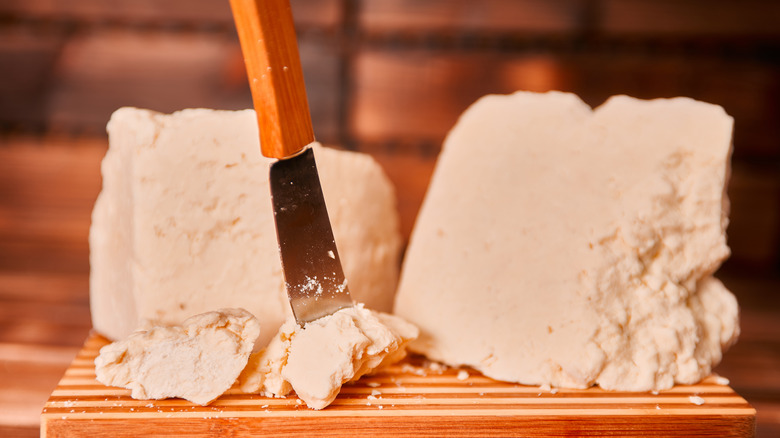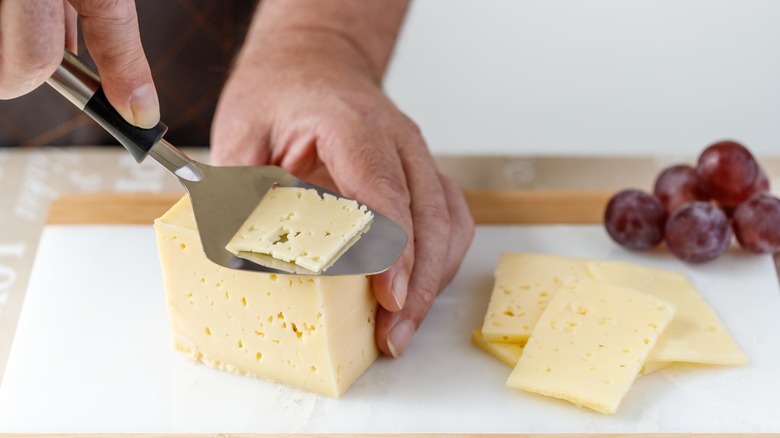Essential Cheese Knives For Charcuterie Lovers
With the holiday season here, many of us may be in the midst of planning parties with our friends, family, or coworkers. And what better way to fill out the appetizer menu and add a little class to your party than with a well-curated cheese plate or charcuterie board?
A good cheese plate offers something for everybody from sharp, classic cheddars to luxurious bries, but there is a trick to serving up cheese: You need the proper tools. Tasting Table spoke to American Cheese Society Certified Cheese Professional (ACS CCP) Laura Downey to get insight into what sort of cheese knives you need to take the cheese plate at your next get-together to the next level.
Downey has 14 years of experience working as a cheesemonger and is also the co-owner of both Fairfield & Greenwich Cheese Company, a specialty food distributor specializing in cheeses and charcuterie, and Cheesemonger Box, a subscription service delivering boxes of gourmet cheese.
Spreadable cheeses
Although Downey notes that a sharp paring knife or butter knife can be used to slice most cheeses day to day, she explains that a serious cheese lover should probably own a set of cheese knives, and there are four specific knives that are necessary when organizing a professional-grade cheese platter.
Starting on the soft end of the spectrum, Downey recommends having a standard cheese spreader to use on soft cheeses like brie, chevre, or camembert. These knives look like a rounded, short butter knife and are perfect for spreading cheese across crackers or small bits of bread.
Semi-soft cheeses
Let's move on to the semi-soft cheeses, which include the likes of gorgonzola, mozzarella, and Roquefort.
They don't quite spread like butter or brie, but also don't require much force to slice, so Downey recommends a semi-soft cheese knife with a hollow center or holes along the blade. This knife is sharp enough to cut through semi-soft cheeses with its hard or serrated edge but has minimal surface area to stick to so you don't lose any delicious cheese to the blade itself as you slice.
Firm cheeses
Continuing up the hardness spectrum to some of the most common types of cheese, the third knife Downey says is a must-own for the cheeseboard enthusiast is a firm cheese knife.
This knife has a sharper edge for slicing firm (aka semi-hard) cheeses like cheddar, Gruyere, and Swiss, and usually has a small pair of fork prongs on the end which can be used to pick up the cheese chunks once you are done slicing them.
Hard cheese
Finally, the fourth knife Downey recommends for your cheese board is the hard cheese knife, which is used for cutting into hard wedges of cheese like Parmigiano Reggiano or aged gouda.
These knives have a hard, flat edge and can look a bit like a chisel. Downey explains that they are used by "sticking the point into the cheese and turning it to create chunks" because these hard cheeses taste best when eaten as chunks to appreciate their protein crystals.
More knife suggestions
What's one cheese knife this cheese monger does not find necessary? That would be the cheese plane. These common knives also have a chisel-like appearance but have a sharp slit in the middle which you drag across the cheese to create thin slices. Downey says she is "not a fan" of these knives because "to use it, you have to hold the whole wedge of cheese which is kind of gross" and furthermore, they create very thin slices, which may not allow you to fully appreciate the cheese.
Another tip Downey recommends is looking for a set of cheese knives that is dishwasher safe with a metal or stone handle instead of the common wood ones to make cleanup after your get-together easier. As far as investment, according to the cheese expert, sets can range between $30 to $100 or more. If you don't feel ready to take the plunge just yet, Downey says paring and butter knives can work in a pinch for hard and soft cheeses, respectively.
